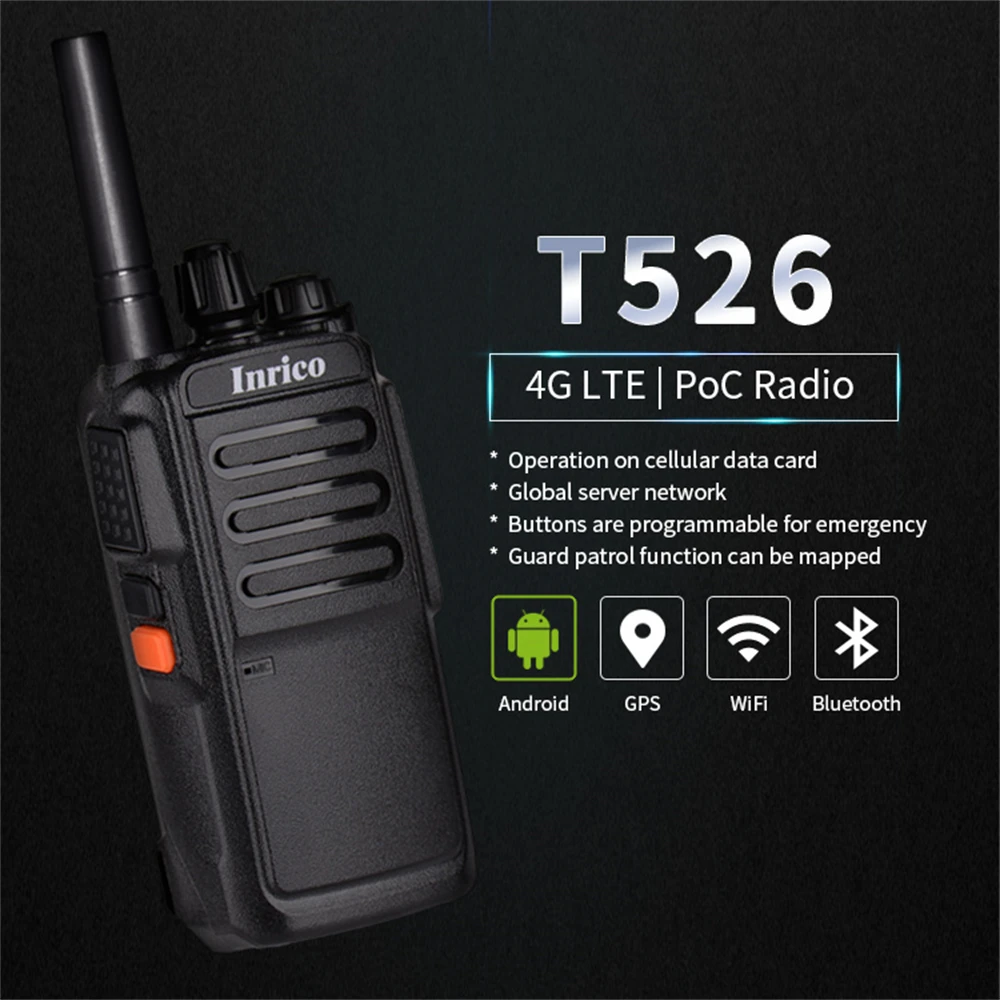Public network walkie talkies VS traditional wireless walkie talkies
There are significant differences in the working principle and coverage range between public network walkie talkies and traditional wireless walkie talkies, which determine their applicability in different scenarios.

01. Working principle
The radio intercom communicates on the same frequency through radio waves, does not rely on the Internet or mobile network, and is suitable for the environment without network coverage. Therefore, in some special environments, such as basements, mountainous areas, or areas far from network coverage, they provide a reliable communication method. At the same time, wireless walkie talkies are also commonly used in emergency situations and outdoor activities, such as rescue operations, wilderness exploration, etc. The communication distance of civil wireless walkie talkies is usually 3-10 kilometers, and the frequency band used is 430MHz-440MHz.
Public network walkie talkies utilize mobile communication networks such as 3G/4G/5G and WiFi to achieve long-distance communication. This type of walkie talkie is not limited to the communication range of traditional radio, and can be used as long as the mobile network covers the area. For example, 318 walkie talkies using IoT cards can make calls over 4G networks, covering a range of up to 5000 kilometers, and can be used almost anywhere with network signals.
02. Cost of use
The usage costs of public network walkie talkies and wireless walkie talkies each have their own characteristics. The cost of public network walkie talkies mainly includes equipment purchase costs and subsequent traffic usage fees. For example, the price of sport walkie talkie ski version is approximately USD$88, and the annual fee for the IoT card varies depending on the service provided, ranging from USD$ 8 to 30 . The advantage of this type of walkie talkie is that it can achieve a wide coverage range and can be used almost anywhere with network signals. The price range of wireless walkie talkies is wide, ranging from few dollars to thousand dollars, depending on performance and functionality. Although the radio does not need to pay for Internet traffic, users need to pay a certain frequency occupancy fee, which is usually about USD$ 16 per year.
Indeed, although helmets and snow goggles with integrated walkie talkies may be more expensive than individual walkie talkies, considering the additional convenience and safety these products provide to users, as well as their practicality in specific activities, this price difference is reasonable. For skiing enthusiasts and professional athletes, this integrated design not only improves the overall performance of the equipment, but also reduces the number of devices that need to be carried during the skiing process, making the movement smoother and more focused. In addition, this design may also include other advanced features such as GPS positioning, emergency distress signals, etc., further enhancing the added value of the product. Therefore, from the perspective of overall value and user experience, this price difference is acceptable.
03. Communication delay

Public network walkie talkies rely on mobile networks for communication, so they may be affected by network conditions, leading to communication delays. This delay is particularly pronounced in situations of poor network signal or network congestion. In some application scenarios that require high real-time performance, such as emergency rescue or activities that require immediate response, this delay may affect communication efficiency.
Due to the fact that ski resorts may be located in remote areas, mobile network signals may be unstable, and public network walkie talkies require data transmission through base stations and network servers, which may result in delays in receiving information. Therefore, for situations that require quick response, it may be more suitable to use wireless walkie talkies, especially in areas with good signal coverage. Wireless walkie talkies can provide faster and more direct communication methods.
Traditional wireless walkie talkies have relatively low communication latency in environments without obstacles and minimal interference, and are often used in emergency communication, public safety, and other scenarios that require quick response.